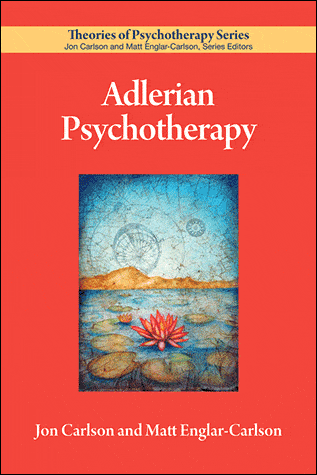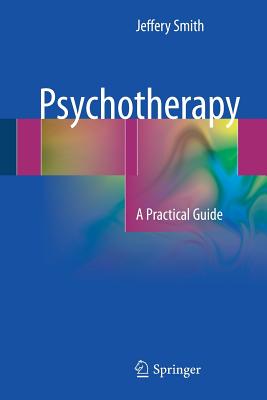Therapy
Schema Therapy: Overview and Benefits
THC Editorial Team August 11, 2022

Contents
- Overview
- What Is Schema Therapy?
- The Schema Therapy Model
- How Does Schema Therapy Work?
- When Is Schema Therapy Used?
- The Potential Benefits of Schema Therapy
- The Effectiveness of Schema Therapy
- Summary/Key Takeaways
Schema therapy is a form of psychotherapy aimed at helping clients identify problematic and maladaptive patterns of thought and behavior that perpetuate their mental health conditions. It was originally developed as a potential treatment for personality disorders, and is now used in chronic, and/or difficult-to-treat conditions.1 This form of therapy integrates aspects of several different therapeutic approaches and theories, including attachment theory and cognitive behavioral therapy, among others. Schema therapy holds that unmet emotional needs in childhood lead people to develop unhealthy coping mechanisms, resulting in persistent mental health challenges in adulthood. Practitioners work with clients to help them understand their unmet emotional needs from childhood and learn to address them effectively to develop healthier coping mechanisms, improved relationships, and happier lives.
What Is Schema Therapy?
Schema therapy combines aspects of cognitive therapy, behavioral therapy, gestalt therapy, interpersonal therapy, attachment theory, experiential therapy, and psychoanalysis into a single psychotherapy approach.1 This treatment approach has been shown to be useful for people whose past treatments have not worked and who exhibit maladaptive behaviors and thought patterns.
Schema therapy was developed by psychologist Jeffrey Young through his postdoctoral work at the University of Pennsylvania with Aaron Beck, the founder of cognitive therapy.2 Young recognized that some individuals had trouble benefitting from standard cognitive therapy, and that these individuals also had chronic and maladaptive patterns of thinking and behaving. Recognizing that they needed a different therapeutic approach, Young worked to develop ways to help clients identify and change their patterns, or schemas.
The maladaptive schemas that therapists focus on are patterns of negative feelings and thoughts that begin in early childhood and continue through adulthood. These patterns form obstacles for individuals and prevent them from accomplishing their goals and meeting their needs. People tend to repeat their schemas internally, which can detrimentally impact their feelings of self-worth and self-esteem and negatively impact their relationships with others.
The Schema Therapy Model
The schema therapy model includes schemas, or “core psychological themes,” coping styles, or the typical personal responses to the schemas, and modes, which describe the current interactions between a person’s schema and their coping style.
Maladaptive, or unhealthy coping styles are generally categorized as: surrender, avoidance, and overcompensation. When one surrenders to a schema, they tend to accept it as true and inevitable. When a person has an avoidant coping style, they tend to avoid situations altogether that may trigger their schema and its associated experience. Someone who overcompensates as a coping style to their schema tends to resist it to an extreme level.1
Schema Therapy Modes
There are four primary modes according to schema therapy. They include child modes, maladaptive coping modes, dysfunctional parent modes, and healthy adult modes.1
The child modes include the following:
- Vulnerable Child
- Angry Child
- Impulsive/Undisciplined Child
- Contented Child
The maladaptive coping modes include:
- Compliant Surrenderer
- Detached Protector
- Overcompensator
The dysfunctional parent modes include:
- Punitive Parent
- Demanding Parent
The healthy adult mode refers to the healthy inner parent, and executive function within the self. One of the primary aims of schema therapy is to strengthen and empower the healthy adult mode within a person.1
How Does Schema Therapy Work?
When a person’s basic emotional needs are not met in early childhood, they might not understand how to independently and effectively meet them in adulthood. These basic needs include guidance, affection, safety, love, and shelter. Practitioners of schema therapy believe that as a result of these unmet needs and negative experiences in childhood, harmful and maladaptive schemas arise that affect how people interpret others’ behavior and life events. People with maladaptive schemas might enter into toxic relationships with others, have poor social skills, exhibit destructive behavior, and make poor choices. They might also have low self-esteem and experience feelings of worthlessness.
Therapists work with clients to help them identify and change maladaptive patterns. They believe that by discovering these underlying schemas and modifying them, clients can learn to build positive relationships and improve feelings of adequacy and self-worth.
Schema therapists might use experiential techniques, such as imagery, to help clients work through negative childhood memories to understand how their negative schemas might have developed. For example, a therapist might ask a client to imagine the sensations of their early memories and then have imaginary conversations with their parents or other caregivers to ask that they meet the person’s needs. The goal of using imagery in schema therapy is to help clients learn to identify current events that prompt emotions similar to those in their upsetting memories so they can work to get their needs met more healthfully.
Schema therapy can generally be broken down into the following three phases:
- Assessment
- Education
- Change
During the assessment phase, the therapist will work with the client to help them identify their maladaptive thoughts and behavioral patterns and determine where they came from. Once the schemas and their origins have been identified, the therapy will move into the education phase. During this phase of treatment, the therapist will help the client recognize when their coping styles are unhelpful and how they work to maintain their schemas. They will also learn to recognize when they switch from one negative schema to another.
The change phase of schema therapy involves the therapist challenging the client’s schemas. This is done by combining different therapeutic techniques from cognitive behavioral, experiential, and interpersonal therapy. The idea is that when a therapist successfully challenges a schema and shows the client that it is false, the schema will have a lesser impact on the individual.3
Clients might be asked to keep journals of their experiences and note when they activate maladaptive schemas throughout the therapeutic process. Through treatment, clients are taught how to identify the cognitive patterns related to their schemas. When these patterns occur between sessions, the individuals can write about their behaviors, feelings, and situations surrounding their negative thought patterns. The therapist and client might then review the journal during the next session to help identify ways for the client to practice meeting their needs differently and applying those new methods.
When Is Schema Therapy Used?
Schema therapy is typically used for personality disorders, chronic conditions, and when other therapeutic approaches have not worked. Therapists might use schema therapy when clients exhibit patterns of negative thoughts and behaviors that continue despite efforts at therapeutic intervention.
The Potential Benefits of Schema Therapy
Schema therapy might offer the following potential benefits to individuals with maladaptive behavioral and cognitive patterns:
- learn new, healthier coping skills
- end maladaptive patterns
- get in contact with one’s genuine, or true feelings
- identify and establish reasonable limits for impulsivity and anger
- learn to resist and challenge self-criticism and self-punishing behaviors
Schema therapy can be used to treat various mental health conditions and is especially effective in treating people with borderline personality disorder.
The Effectiveness of Schema Therapy
Researchers have found that schema therapy can be effective in treating several types of mental health conditions, including personality disorders (particularly borderline personality disorder), eating disorders, posttraumatic stress disorder, and depression.
In one study of people with narcissistic personality disorder, histrionic personality disorder, and paranoid personality disorder, researchers compared the results of people who received 50 sessions of schema therapy to those who received standard treatment. They found that the individuals who underwent schema therapy showed significantly greater recovery than those in the standard treatment group.4
Multiple studies have looked at the effectiveness of schema therapy in treating borderline personality disorder, which is known to be difficult to treat. In a literature review, researchers—while calling for additional research—found that schema therapy shows promise as an effective treatment for individuals who have borderline personality disorder.5
Schema therapy has also shown promise in treating people with eating disorders, including bulimia nervosa and anorexia nervosa. A narrative review of the literature found that schema therapy helped people in their recovery from eating disorders. However, the researchers stated that more research needs to be done.6
A small study conducted by researchers in Iran found that emotional schema therapy can be an effective treatment for veterans diagnosed with posttraumatic stress disorder.7 The study demonstrated that the people who received schema therapy improved their ability to regulate emotions.
Finally, a meta-analysis of research on the effectiveness of schema therapy for treating depressive disorders found that the approach is highly effective.8
Summary/Key Takeaways
Schema therapy is a relatively new psychotherapeutic approach that shows promise for treating people with intransigent mental health conditions that have not responded to other types of treatment. However, because of its relative newness, the effectiveness of schema therapy needs to be established through additional research.
















